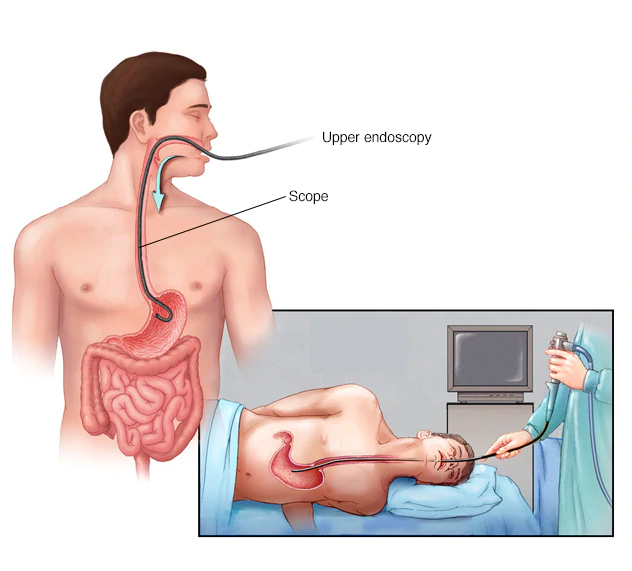Endoscopy

Endoscopy is a nonsurgical procedure used to examine a person’s digestive tract. Using an endoscope, a flexible tube with a light and camera attached to it, your doctor can view pictures of your digestive tract on a color TV monitor.
During an upper endoscopy, an endoscope is easily passed through the mouth and throat and into the esophagus, allowing the doctor to view the esophagus, stomach, and upper part of the small intestine.
Doctors will often recommend endoscopy to evaluate:
- Stomach pain
- Ulcers, gastritis, or difficulty swallowing
- Digestive tract bleeding
- Changes in bowel habits (chronic constipation or diarrhea)
- Polyps or growths in the colon
In addition, your doctor may use an endoscope to take a biopsy (removal of tissue) to look for the presence of disease.
Endoscopy may also be used to treat a digestive tract problem. For example, the endoscope might not only detect active bleeding from an ulcer, but devices can be passed through the endoscope that can stop the bleeding. In the colon, polyps can be removed through the scope to prevent the development of colon cancer.
